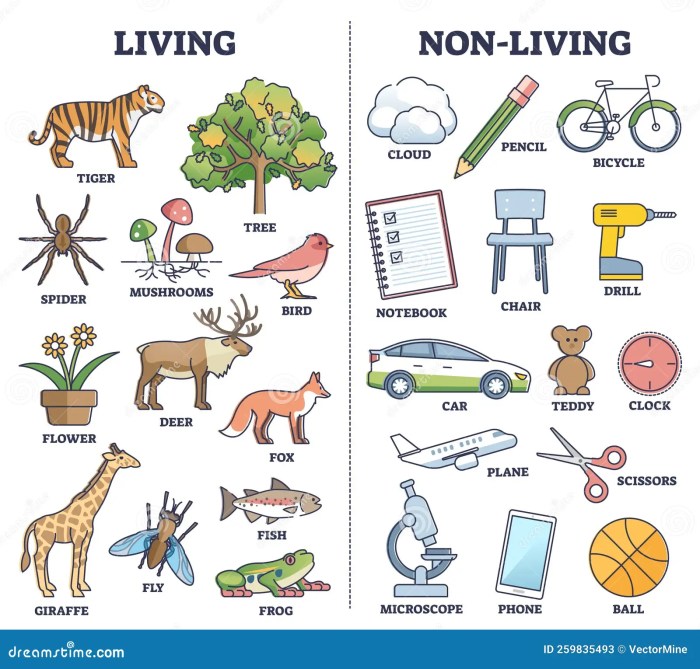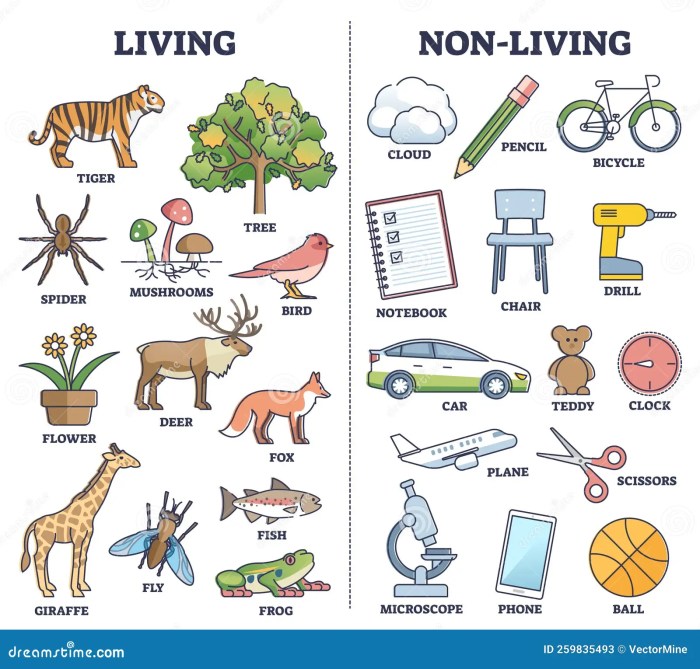Things to know before traveling to Madrid: Embark on a captivating journey to Spain’s vibrant capital with this essential guide. From navigating the city’s intricate transportation system to understanding visa requirements, this comprehensive overview covers all the crucial details you need to plan a seamless and unforgettable trip. Discover the must-see historical sites, indulge in the delectable culinary scene, and immerse yourself in the rich culture of Madrid.
This guide provides a detailed breakdown of everything from visa requirements and accommodation options to essential packing lists and local customs. Prepare for an enriching experience by familiarizing yourself with the intricacies of Madrid before you arrive. We’ll equip you with the knowledge to make the most of your time in this dynamic city.
Visa Requirements and Entry Procedures
Planning a trip to Madrid involves more than just booking flights and accommodations. Understanding the visa requirements and entry procedures is crucial for a smooth and hassle-free journey. This section will provide a comprehensive overview of visa necessities for various nationalities, essential documents, and the customs regulations you should be aware of.Visa requirements for entering Spain, and specifically Madrid, vary significantly depending on your nationality.
This section aims to clarify these differences and guide you through the necessary steps.
So, you’re planning a trip to Madrid? Excellent choice! Before you jet off, it’s crucial to familiarize yourself with the local payment scene. Knowing how to handle card currency payments when traveling, like using your credit or debit card abroad, is essential for a smooth trip. This handy guide will help you understand the ins and outs of international transactions, so you can avoid any nasty surprises while navigating the city.
And, of course, remember to check visa requirements before you go! Just a few things to keep in mind before you embark on your Madrid adventure.
Visa-Free Entry
For citizens of certain countries, entry into Spain is visa-free for tourism purposes. This means you can travel to Madrid without needing a visa for a predetermined period. However, you must meet specific conditions and carry the necessary documents. The length of your stay, and the purpose of your trip, must align with the terms of the visa-free agreement between your country and Spain.
Visa Requirements for Specific Nationalities
The table below summarizes the visa requirements for a few example countries:
| Country | Visa Requirement | Processing Time | Documents Needed |
|---|---|---|---|
| United States | Visa-free entry for tourism, typically up to 90 days | N/A | Passport, valid for at least 3 months beyond intended stay, proof of onward travel, and sufficient funds to cover your trip. |
| China | Visa required | Variable, typically 1-3 weeks, but can vary significantly based on the application center and current demand | Passport, completed application form, proof of sufficient funds, proof of accommodation, return/onward ticket, and supporting documents. |
| India | Visa required, with several options based on purpose and duration of stay. | Variable, depending on visa type and application center | Passport, completed application form, proof of funds, itinerary, and proof of accommodation. |
Note that this table is not exhaustive. You should always consult the official website of the Spanish embassy or consulate in your country for the most up-to-date and precise information tailored to your specific nationality.
Essential Documents for Visa Application
A comprehensive list of documents required for visa applications varies depending on your nationality and the purpose of your visit. Typical documents include:
- Passport: A valid passport is essential. Ensure it’s valid for at least three months beyond your intended stay.
- Visa application form: Complete the application form accurately and truthfully. Incorrect information can lead to delays or rejection.
- Proof of funds: Demonstrate you have sufficient financial resources to cover your expenses during your stay in Spain. Bank statements, sponsorship letters, or other similar documents are often required.
- Travel itinerary: A detailed travel itinerary outlining your planned activities and accommodation arrangements can strengthen your application.
- Proof of accommodation: Evidence of hotel bookings or other accommodations during your stay.
- Return/onward ticket: Demonstrating your intention to return to your home country or proceed to your next destination.
Entry Procedures into Spain
Upon arrival at a Spanish airport, you will be subject to immigration checks. Present your passport and any necessary visa documents to the immigration officer. Be prepared to answer questions about the purpose of your visit and your planned stay. Follow the instructions provided by the immigration officer.
Customs Regulations
Spain, like many countries, has customs regulations regarding the import and export of goods. These regulations can vary depending on the items you intend to bring in or take out of the country. Be mindful of the restrictions and declare any items exceeding the permitted limits.
Accommodation Options
Madrid offers a diverse range of accommodation options to suit every traveler’s needs and budget. From bustling hostels to luxurious hotels, you’ll find something perfect for your trip. Understanding the different types and their associated costs is key to planning your stay efficiently.Choosing the right accommodation can significantly impact your overall Madrid experience. Consider factors like your budget, desired level of comfort, and social interaction preferences when making your selection.
This section will explore various options, providing insights into booking procedures and location recommendations.
Budget-Friendly Options
Hostels are a popular and cost-effective choice for budget-conscious travelers. They provide a social environment and often include shared facilities like kitchens and common areas. This can be a great way to meet fellow travelers and experience a more immersive aspect of the local culture. Hostels often have strategic locations, frequently near metro stations, making transportation convenient.
Planning a trip to Madrid? Knowing the local customs is key, but did you know that if you’re heading to Rome during a Papal Conclave, there’s a whole set of extra things to consider? For example, check out rome papal conclave tips for visitors for insights on travel and event etiquette. Ultimately, whether you’re in Madrid or Rome, research is your best friend before you go, and it’s great for avoiding any surprises!
A typical hostel room can range from dorm rooms with multiple beds to private rooms, each with its own price point.
Mid-Range Accommodations
Hotels in Madrid cater to a wide spectrum of budgets and preferences. From comfortable mid-range options to stylish boutique hotels, the city offers numerous choices. Mid-range hotels often provide amenities like complimentary breakfast, Wi-Fi, and sometimes a gym. These hotels often provide a good balance of comfort and affordability. They usually are located in central areas with convenient access to attractions and transportation.
Luxury Hotels
For a truly unforgettable experience, luxury hotels in Madrid offer unparalleled comfort and service. These establishments often boast elegant décor, exquisite amenities like spas and rooftop terraces, and personalized service. They are usually located in prime locations, offering easy access to the city’s finest attractions. Expect higher price points reflecting the level of service and luxury.
Booking Accommodations in Advance
Booking accommodations in advance is highly recommended, especially during peak tourist seasons. This ensures availability and potentially allows you to secure better rates. Many hotels and hostels offer online booking platforms or phone reservations, making the process straightforward. Websites like Booking.com, Expedia, or Airbnb can be useful resources for finding and comparing options.
Summary of Accommodation Types
| Accommodation Type | Description | Estimated Cost (per night) | Location Recommendations |
|---|---|---|---|
| Boutique Hotel | Stylish and personalized hotel experience, often with unique design elements. | €150-€300 | Malasaña, Salamanca, areas near the city center |
| Hostel | Social and budget-friendly accommodation, perfect for solo travelers or groups. | €20-€50 | Near metro stations, vibrant neighborhoods |
| Mid-Range Hotel | Comfortable and affordable hotel experience with basic amenities. | €80-€150 | Central locations, near major attractions and transportation hubs. |
| Luxury Hotel | Unparalleled comfort and service, often with exquisite amenities. | €300+ | Prime locations, typically near major landmarks or historical districts. |
Transportation in Madrid
Madrid boasts an excellent public transportation system, making getting around the city a breeze. From the historic city center to the vibrant neighborhoods beyond, the metro, buses, and trains provide convenient and efficient connections. This section will detail the system, offering tips for effective use and practical information on purchasing tickets.
Madrid’s Public Transportation System
Madrid’s public transportation system is comprehensive, with a vast network of metro lines, buses, and commuter trains. The metro, with its extensive coverage, is ideal for navigating long distances quickly. Buses provide access to neighborhoods not directly served by the metro, offering a more local perspective of the city. Commuter trains connect Madrid to surrounding towns and cities, making day trips easily achievable.
Understanding the interconnectedness of these modes of transport is key to maximizing your time and minimizing travel hassles.
Using the Transportation System Effectively
Navigating Madrid’s transport system efficiently requires a few key strategies. First, familiarize yourself with the city map, noting key landmarks and their proximity to transport hubs. Utilize online maps and apps that display real-time information, such as estimated arrival times and potential delays. Consider purchasing a multi-day travel pass if you plan on using the system extensively.
This can often be more cost-effective than purchasing individual tickets for each journey. Understanding the different ticket options and how to use them efficiently is crucial for minimizing delays and maximizing your travel experience.
Purchasing Transportation Tickets
A variety of ticket options are available for Madrid’s public transportation system. Single tickets are valid for a single journey, while multi-day passes offer more flexibility for frequent travelers. Travel cards, such as the T-Casual, are pre-loaded cards allowing for convenient and automatic payment on journeys. The best option depends on your travel plans. It’s advisable to check the official website or app for the most up-to-date information on ticket prices and availability.
Purchasing tickets in advance can help you avoid queues at ticket machines or booths.
Specific Routes for Getting Around Madrid
For a comprehensive tour of the city, consider a route that takes you from the city center, exploring the historic sites, then branching out to nearby neighborhoods with unique attractions. The metro can efficiently connect you to museums, palaces, and major plazas. Complement this with bus routes that traverse the city’s residential areas, allowing for a deeper immersion into local life.
A suggested route for a full-day trip could start at the Royal Palace, continue to the Prado Museum via the metro, and then explore the surrounding neighborhoods by bus, returning to the city center for dinner. Remember to plan your route considering the time needed for travel and your interests.
Metro System Usage Flow Chart
| Step | Action |
|---|---|
| 1 | Identify your starting and destination stations on the metro map. |
| 2 | Use a mobile app or online platform to check real-time metro schedules and potential delays. |
| 3 | Purchase a valid metro ticket (single, multi-day, or travel card). |
| 4 | Locate the designated metro entrance and validate your ticket. |
| 5 | Find the platform corresponding to your desired destination line. |
| 6 | Board the train and find a seat. |
| 7 | Upon arrival at your destination, exit the train and station. |
Essential Packing List
Packing for a trip to Madrid requires careful consideration of the city’s diverse weather and the activities you plan to undertake. This essential packing list provides a comprehensive guide to ensure a smooth and enjoyable journey, encompassing clothing, documents, and accessories. Careful preparation is key to avoiding potential inconveniences and maximizing your time in the Spanish capital.
Clothing Considerations, Things to know before traveling to madrid
To fully enjoy your time in Madrid, it’s crucial to pack appropriate clothing for various weather conditions. Consider the potential for both warm days and cooler evenings, as well as the possibility of rain. A versatile wardrobe will be your best ally.
- Base Layers: Pack thermal underwear or t-shirts and long-sleeved shirts for layering. This allows for flexibility and comfort throughout the day.
- Outerwear: A light jacket or sweater is recommended, especially for evenings or cooler days. Consider a waterproof jacket if there’s a chance of rain.
- Shoes: Comfortable walking shoes are essential for exploring the city’s many attractions. Pack a pair of dressier shoes if you plan on attending any formal events.
- Accessories: Sunglasses, a hat, and sunscreen are vital for protection from the sun, even on cloudy days. A scarf or shawl can add warmth and style.
- Formal Wear (Optional): If you plan on attending any formal events, pack appropriate attire. A nice pair of trousers and a collared shirt or dress will be suitable.
Weather-Specific Clothing
Madrid’s weather can be unpredictable. This table provides a guide for packing based on different conditions.
| Weather Condition | Clothing Items |
|---|---|
| Warm and sunny | Lightweight shirts, shorts, skirts, t-shirts, sunglasses, sunscreen, and a light, foldable umbrella. |
| Rainy | Waterproof jacket, waterproof shoes, umbrella, and a light raincoat. |
| Cool and breezy | Sweaters, cardigans, and light jackets. |
Essential Documents
Having the correct documentation is critical for a seamless trip. These documents should be readily accessible and safely stored.
- Passport: Ensure your passport is valid for at least six months beyond your intended stay.
- Visa (if required): Obtain the necessary visa well in advance, adhering to specific requirements.
- Flight Tickets: Keep copies of your flight tickets and boarding passes, or download them to your phone.
- Accommodation Confirmation: Print or have digital copies of your hotel or Airbnb reservation.
- Travel Insurance Information: Have a copy of your travel insurance policy and emergency contact information.
- Important Contact Numbers: Keep a list of emergency contacts and relevant phone numbers, including local emergency services.
Recommended Brands for Packing Essentials
Several brands excel in providing quality and practicality for packing essentials.
- Patagonia: Known for durable, high-quality outdoor gear, Patagonia offers versatile clothing suitable for various weather conditions.
- Columbia: Columbia provides excellent rain gear, perfect for unpredictable weather. Their outdoor apparel is durable and functional.
- Uniqlo: Uniqlo’s versatile, affordable clothing items, such as thermal underwear, are ideal for layering.
- Samsonite: Samsonite offers durable luggage options, ensuring your belongings are well-protected during transit.
Cultural and Historical Sites
Madrid, a city steeped in history, offers a captivating tapestry of cultural and historical sites waiting to be explored. From royal palaces to artistic masterpieces, each location whispers tales of the city’s past, shaping its present identity. Immerse yourself in the grandeur of Spain’s rich heritage, and discover the stories that these iconic landmarks hold.Exploring these sites provides a profound understanding of Madrid’s evolution, from its medieval origins to its modern-day prominence.
These locations offer a unique perspective on the city’s artistic, political, and social development.
Must-See Cultural and Historical Sites
Madrid boasts a wealth of iconic cultural and historical sites, each with a unique story to tell. Here are some essential destinations to add to your itinerary:
- Royal Palace of Madrid: This magnificent palace, once the residence of the Spanish royal family, stands as a testament to Spanish grandeur. Its vast halls and opulent chambers reflect centuries of Spanish history and royal tradition. The palace’s intricate architecture and stunning interiors are a feast for the eyes, and offer a glimpse into the lives of Spanish royalty.
Madrid’s a fantastic city, but knowing a few things beforehand can make your trip smoother. For example, checking out how Cody Rigsby, the Peloton celebrity, plans his travel fitness routines and wellness adventures, might give you some great insights on maximizing your time while you’re there. Cody Rigsby’s Peloton celebrity travel fitness wellness strategies could help you find the best gyms, and hidden tapas spots, plus plan for a more enjoyable and effective travel schedule.
Ultimately, being prepared for the unexpected is key to any great trip.
The palace’s state rooms showcase elaborate tapestries, portraits, and decorative items. Exploring the palace grounds provides a sense of the royal lifestyle.
- Plaza Mayor: A historic public square, Plaza Mayor is a central landmark of Madrid. Originally built in the 17th century, it served as a gathering place for public events, celebrations, and executions. Today, the square retains its historical significance, serving as a hub for tourism and a vibrant cultural space. The plaza’s surrounding buildings exhibit a harmonious blend of architectural styles, reflecting Madrid’s evolution through the centuries.
- Prado Museum: Home to a world-renowned collection of Spanish Masters, including works by Goya, Velázquez, and El Greco, the Prado Museum offers a profound journey through Spanish art history. The museum’s vast collection showcases masterpieces spanning various periods and styles. This museum’s historical significance is evident in its preservation of Spanish artistic heritage.
- Temple of Debod: This Egyptian temple, gifted to Spain, stands as a fascinating testament to the country’s rich cultural exchange. The temple’s intricate carvings and architectural details offer insights into ancient Egyptian civilization. This unique location provides a glimpse into a different historical era.
Sample Itinerary
A suggested itinerary for exploring these sites is:
- Day 1: Begin your exploration at the Royal Palace of Madrid, followed by a visit to Plaza Mayor. Enjoy the evening strolling through the plaza’s surrounding area.
- Day 2: Dedicate this day to the Prado Museum, immersing yourself in the masterpieces of Spanish art. In the afternoon, visit the Temple of Debod for a different cultural experience.
Best Times to Visit
To avoid crowds, consider visiting these sites during the off-season or early morning hours. Early morning visits are particularly effective, allowing for a more peaceful and immersive experience.
Food and Dining Experiences
Madrid’s culinary scene is vibrant and diverse, reflecting its rich history and cosmopolitan character. From traditional tapas bars to Michelin-starred restaurants, there’s something for every palate and budget. The city’s passionate approach to food is evident in the fresh ingredients, innovative techniques, and communal dining experiences often found in its many restaurants.Exploring Madrid’s food scene is an integral part of experiencing the city’s culture.
It’s a chance to savor authentic Spanish flavors, discover local specialties, and engage in the social rituals surrounding dining. From bustling markets to intimate tapas bars, Madrid offers a multitude of ways to indulge in its delicious cuisine.
Local Specialties
Madrid boasts a wide array of local specialties, reflecting the region’s agricultural heritage. From hearty stews to fresh seafood dishes, the cuisine offers a delectable journey through Spanish culinary traditions. Many of these specialties showcase the use of high-quality, locally sourced ingredients, creating dishes that are both flavorful and nutritious.
Affordable Dining Options
Finding affordable dining options in Madrid is straightforward. Many tapas bars and “pinchos” (small skewers) establishments offer delicious meals at reasonable prices. These venues are perfect for experiencing the vibrant social scene of Madrid while keeping costs manageable. “Menú del día” (daily menus) are another great way to enjoy a full meal at an affordable price, usually offering a variety of options from soups to main courses.
Look for restaurants in less touristy areas for even more budget-friendly experiences.
High-End Dining Experiences
For a truly luxurious dining experience, Madrid offers a plethora of Michelin-starred restaurants and upscale establishments. These restaurants showcase innovative techniques, exquisite presentations, and the finest ingredients. Expect to pay a premium for these experiences, but they often offer an unforgettable culinary journey, showcasing the most exceptional flavors and artistic expressions in cuisine. Reservations are highly recommended for these establishments.
Local Food Markets
Madrid’s vibrant food markets are a sensory feast. These markets are more than just places to buy groceries; they are social hubs and culinary showcases. The Mercado de San Miguel, for example, is a renowned market offering a wide array of fresh produce, artisan cheeses, cured meats, and prepared foods. Shopping and dining at these markets is a great way to immerse yourself in the local culture.
Sampling various delicacies and interacting with vendors offers a unique perspective on Spanish food.
Dining Etiquette in Spain
Dining etiquette in Spain is generally relaxed and convivial. However, some common practices are important to observe. It’s common to order tapas or small dishes to share, creating a communal dining experience. Using both hands when eating is also acceptable. Also, remember to use a fork and knife when appropriate.
The locals generally appreciate those who are respectful of their customs.
Restaurants Known for Specific Types of Cuisine
- Traditional Spanish Cuisine: Sobrino de Botín, a three-Michelin-starred restaurant known for its traditional Spanish dishes and rich history, is a must-visit for those seeking authentic experiences.
- Modern Tapas: Many bars in the La Latina neighborhood offer creative and innovative tapas options. These bars are known for their unique flavor combinations and stylish ambiance. Expect an exciting tapas journey!
- Seafood: Restaurants in the areas surrounding the port often offer fresh seafood dishes. Look for restaurants with direct access to the docks or those near the city’s waterfront for the best options.
Safety and Security: Things To Know Before Traveling To Madrid

Madrid is a generally safe city for tourists, but like any major city, it’s essential to take precautions to ensure a smooth and enjoyable trip. Understanding potential risks and implementing safety measures will help you feel secure while exploring the vibrant culture and historical sites. This section provides crucial information to help you stay safe and enjoy your time in Madrid.
Crime Rates and Potential Risks
Madrid, while generally safe, experiences petty theft, like pickpocketing, in crowded areas, particularly during peak tourist seasons. Crimes like robbery, while less frequent, can occur. It’s important to be aware of your surroundings, especially in crowded tourist areas, public transport, and at night. Being vigilant about your belongings, especially in crowded metro stations or busy plazas, can significantly reduce the likelihood of becoming a victim of theft.
Safety Precautions for Travelers
Maintaining awareness of your surroundings is paramount. Keep your valuables close, especially in crowded areas. Avoid displaying expensive jewelry or electronics in public. Use well-lit and populated streets, and if possible, avoid walking alone at night in poorly lit areas. Trust your instincts; if a situation feels uncomfortable, remove yourself from it.
Using secure and reputable transportation services is also crucial. Pre-paid taxis and ride-sharing apps are generally safer options than hailing taxis on the street.
Emergency Contact Numbers
Knowing the emergency numbers can be invaluable in case of an emergency. For urgent medical assistance, call 112. For non-emergency police assistance, dial 091. For assistance from the city’s emergency services, call 092. It’s also advisable to inform someone of your travel plans and expected return time, and to carry a copy of your passport and important documents.
Staying Safe While Exploring
- Be aware of your surroundings, particularly in crowded areas and on public transport.
- Keep your valuables close, and avoid displaying expensive items.
- Use well-lit and populated areas, especially at night.
- Be cautious when using ATMs and avoid withdrawing large sums of money in isolated locations.
- Avoid walking alone in poorly lit areas at night.
- Inform someone of your itinerary and expected return time.
- Use reputable transportation services, such as pre-paid taxis or ride-sharing apps.
Be mindful of your surroundings and belongings, especially in crowded areas. Avoid displaying expensive jewelry or electronics.
Local Customs and Etiquette
Madrid, a vibrant city brimming with culture, boasts a unique set of customs and etiquette that visitors should be mindful of to ensure a smooth and respectful experience. Understanding these social norms will allow you to navigate interactions with locals effortlessly and foster positive relationships. Respect for tradition and personal space are key components of the Spanish social fabric.Understanding the social norms and expectations will help you to feel more comfortable and integrated into the Madrid community.
This includes knowing how to greet people, make small talk, and behave in various social settings. Paying attention to these details can significantly enhance your experience.
Greetings and Introductions
Spanish greetings are warm and often involve physical contact, like a kiss on both cheeks. This is especially common among friends and family, and in some professional settings. For example, business colleagues might greet each other with a kiss on both cheeks.
- Formal greetings: When meeting someone for the first time or addressing an elder, use “Buenos días” (Good morning), “Buenas tardes” (Good afternoon), or “Buenas noches” (Good evening), followed by a formal title like “Señor” (Mr.) or “Señora” (Mrs.) and the last name.
- Informal greetings: With friends and acquaintances, a simple “Hola” (Hello) is perfectly acceptable. If you are unsure, err on the side of formality.
Dining Etiquette
Dining in Spain is a social affair, often extending beyond just consuming food. Proper etiquette is important, and demonstrating respect for the dining experience shows your appreciation for the host.
- Table Manners: Using utensils correctly is crucial. Use the fork in your left hand and the knife in your right. Cut your food into small pieces and avoid talking with your mouth full. And don’t forget to thank the host for the meal!
- Ordering: If you’re in a restaurant, you may be asked if you’d like to share a plate (plato compartido) with others. This is a common practice, particularly in tapas bars. It’s a great way to try many different flavours and sample the local dishes.
Small Talk and Conversation
Spanish people enjoy engaging in conversation. Showing interest in the local culture and asking questions about their experiences and opinions is a great way to show respect and build connections.
- Topics to avoid: Sensitive topics like politics, religion, or personal finances are best avoided in initial conversations. Focus on general interests like the weather, the city, or hobbies.
- Useful Phrases: Learning a few basic Spanish phrases demonstrates your effort to connect with the local culture. These phrases can go a long way in showing your respect and interest in their culture.
Useful Phrases in Spanish
Here are some phrases that will help you navigate everyday situations in Madrid:
| Situation | Spanish Phrase | English Translation |
|---|---|---|
| Greetings | Buenos días | Good morning |
| Greetings | Buenas tardes | Good afternoon |
| Greetings | Buenas noches | Good evening |
| Hello | Hola | Hello |
| Thank you | Gracias | Thank you |
| You’re welcome | De nada | You’re welcome |
| Excuse me | Perdón | Excuse me |
“¡Buen provecho!” (Bon appetit!) is a polite expression to use before eating a meal.
Closing Notes

In conclusion, traveling to Madrid is an adventure brimming with cultural experiences and culinary delights. This guide equips you with the knowledge and insights to navigate the city with confidence, ensuring a smooth and memorable trip. From understanding the visa process to mastering the metro system, and from savoring authentic tapas to respecting local customs, this comprehensive overview covers all the essential aspects of a successful Madrid getaway.
Embrace the vibrant energy of Madrid and create unforgettable memories.




